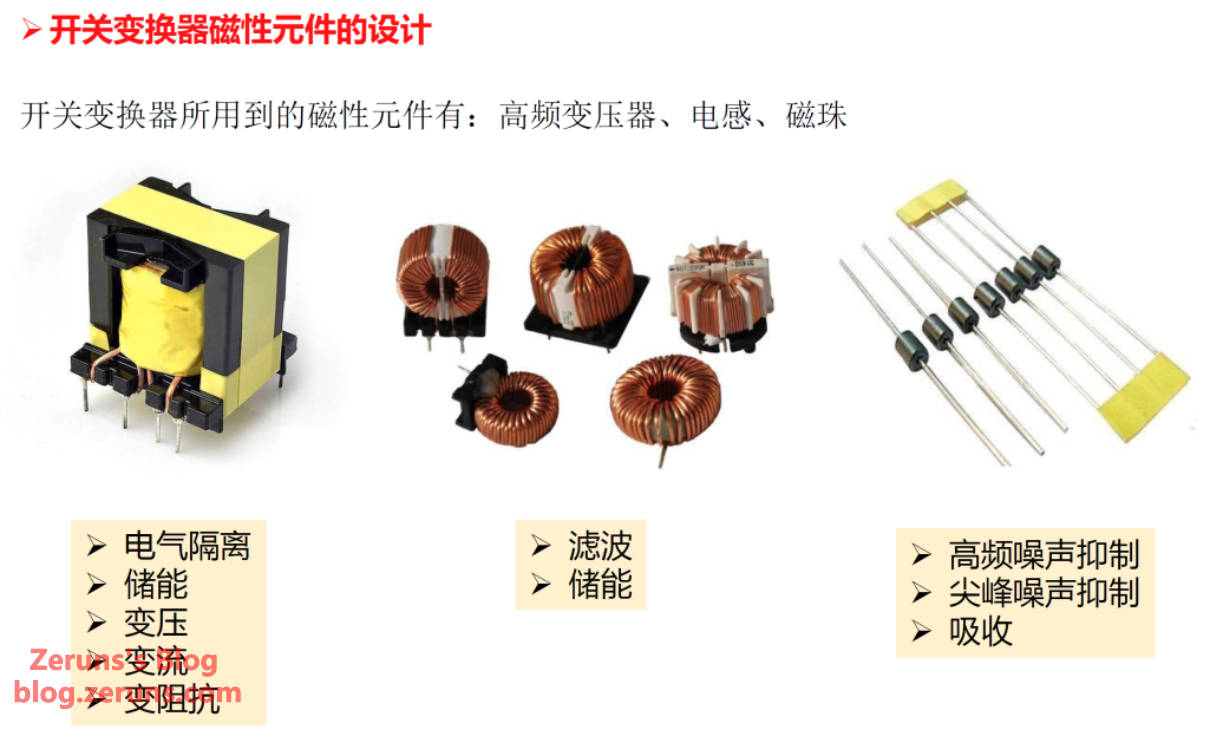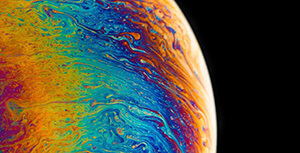Magnetic Components / Magnetic Core Materials / Core Structures Comparison and Selection Guide
In magnetic component design, the magnetic core is the key factor determining performance, efficiency, and cost. From AC/DC power supplies to new energy inverters, from filter inductors to high-frequency transformers, the choice of core material directly impacts product reliability and market competitiveness. This article systematically reviews key magnetic core parameters, mainstream material characteristics, typical structural differences, and provides targeted engineering selection recommendations, offering a one-stop reference for electronic engineers.
Electronics / MCU Technology Exchange QQ Group: 2169025065
This article contains AI-generated content!

I. Key Magnetic Core Parameters and Their Roles
Magnetic core parameters are the foundation for matching material properties with applications. The table below summarizes the most commonly used key parameters in design:
| Symbol | Unit | Definition | Core Role |
|---|---|---|---|
| μ₀ | H/m | Vacuum permeability (constant, μ₀ = 4π×10⁻⁷ H/m) | Baseline for calculating relative permeability |
| μᵣ | - | Relative permeability (μᵣ=μ/μ₀, μ is material permeability) | Reflects material’s magnetic conduction ability, determines inductance and core volume |
| Bₛ | T | Saturation flux density (flux density when material reaches saturation) | Limits maximum operating flux, prevents saturation-induced loss surge and inductance drop |
| Bᵣ | T | Residual flux density (flux density remaining when external field is zero) | Affects core reset difficulty, critical for inductance stability under DC bias |
| Hᵍ | A/m | Coercivity (field strength required to eliminate residual flux) | Reflects hysteresis characteristics, lower coercivity means lower hysteresis loss |
| Pₑ (Pcv) | kW/m³ | Core loss per volume (includes hysteresis and eddy current losses) | Determines heating and efficiency, key factor for high-frequency applications |
| Tc | ℃ | Curie temperature (critical temperature where permeability drops sharply) | Limits maximum operating temperature, prevents performance failure at high temp |
| AL | nH/N² | Inductance factor (inductance per turn squared, AL=L×10⁹/N²) | Key for quick inductance calculation, directly related to size and permeability |
| ΔB | T | Flux swing (operating flux density variation, typically 0.5~0.8Bₛ) | Determines energy storage capacity (W=0.5×B²/μ₀μᵣ×V) |
II. Comparison of Mainstream Magnetic Core Materials
Magnetic core materials are broadly categorized into soft magnetic metals and ferrite materials. Their frequency characteristics, losses, and saturation properties vary significantly, directly determining their application fields:
| Material Type | Advantages | Disadvantages | Frequency Range | Typical Applications |
|---|---|---|---|---|
| Silicon Steel (Si) | High Bₛ (1.5~2.0T), low cost, high mechanical strength | High-frequency loss, medium μᵣ (1000~8000) | 50Hz~10kHz | Power transformers, distribution transformers, low-frequency inductors, motor stators |
| Mn-Zn Ferrite | Low HF loss, high μᵣ (2000~20000), good insulation, moderate cost | Low Bₛ (0.3 |
10kHz~5MHz | SMPS transformers, filter inductors, LED drivers |
| Ni-Zn Ferrite | Excellent high-frequency performance, high resistivity, stable temperature characteristics | Low Bₛ (0.2 |
1MHz~1GHz | RF antennas, EMC filters, high-frequency communication transformers |
| Sendust (Fe-Si-Al) | High Bₛ (1.0~1.2T), low loss, near-zero magnetostriction (low noise) | Brittle, difficult to process | 10kHz~500kHz | Automotive inductors, UPS filter inductors, audio transformers |
| Permalloy | Very high μᵣ (10⁴~10⁵), low Hᵍ, low hysteresis loss | Low Bₛ (0.6~0.8T), costly, easily oxidized | 100Hz~100kHz | Precision current transformers, magnetic amplifiers, audio transformers, weak field sensors |
| Amorphous Alloy | High Bₛ (1.5~1.7T), low Pₑ (30%~50% less than silicon steel), high permeability | Brittle, limited shapes, relatively high cost | 50Hz~50kHz | High-frequency power transformers, UPS transformers, EV onboard chargers |
| Nanocrystalline | Very high μᵣ (10⁴ |
Expensive, complex processing | 1kHz~1MHz | HF SMPS transformers, PV inverter inductors, EV DC/DC converters |
| MPP (Mo-Ni-Fe) | Stable permeability, excellent DC bias capability, low loss | Low Bₛ (0.7~0.8T), very high cost | 1kHz~200kHz | Military power supplies, precision instrument inductors, HF pulse transformers |
III. Typical Core Material Models and Key Parameters
The table below lists representative models from different material families, providing parameter references (values are typical, may vary across manufacturers):
| Material | Model | Initial μᵣ | Bₛ (25℃) | Core Loss Pₑ (typical) | AL Range (Φ20 core) |
|---|---|---|---|---|---|
| Mn-Zn Ferrite | PC44 (TDK) | 2300 | 0.47T | 200kW/m³ (100kHz, 0.2T) | 1800~2200nH/N² |
| Mn-Zn Ferrite | PC95 (TDK) | 3000 | 0.42T | 80kW/m³ (200kHz, 0.15T) | 2200~2600nH/N² |
| Silicon Steel | 30Q130 | 4500 | 1.95T | 1.3W/kg (50Hz, 1.7T) | 800~1000nH/N² |
| Silicon Steel | 50A470 | 3000 | 1.85T | 4.7W/kg (50Hz, 1.7T) | 500~700nH/N² |
| Sendust | 2605SA | 800 | 1.05T | 35kW/m³ (50kHz, 0.5T) | 400~600nH/N² |
| Sendust | 2605SC | 1200 | 1.0T | 50kW/m³ (100kHz, 0.4T) | 600~800nH/N² |
| Permalloy | 1J85 | 30000 | 0.78T | 15kW/m³ (10kHz, 0.2T) | 3000~3500nH/N² |
| Permalloy | 1J79 | 45000 | 0.75T | 10kW/m³ (5kHz, 0.2T) | 4000~4500nH/N² |
| Amorphous | 1K101 | 15000 | 1.56T | 25kW/m³ (20kHz, 0.5T) | 1500~1800nH/N² |
| Amorphous | 1K107 | 20000 | 1.45T | 20kW/m³ (20kHz, 0.4T) | 1800~2100nH/N² |
| Nanocrystalline | FINEMET | 50000 | 1.2T | 5kW/m³ (100kHz, 0.2T) | 4500~5000nH/N² |
| Nanocrystalline | NANOPERM | 80000 | 1.0T | 3kW/m³ (200kHz, 0.1T) | 6000~6500nH/N² |
IV. Magnetic Core Structures and Bobbin Types Comparison
Core structures determine magnetic path characteristics, assembly difficulty, and thermal performance, and must be selected according to application scenarios:
| Structure Type | Advantages | Disadvantages | Typical Applications |
|---|---|---|---|
| EE | Symmetrical magnetic path, large window (easy winding), simple assembly, low cost | Larger leakage flux, poor shielding | Medium-high power SMPS transformers, PFC inductors |
| EI | Easy winding, detachable assembly, very low cost | Discontinuous path, large leakage, low efficiency | Power-frequency transformers, low-power linear supplies |
| PQ | Compact, high power density, low leakage, good thermal performance | Small window (harder winding), medium cost | High-density SMPS, automotive DC/DC converters |
| RM | Excellent shielding (canister type), minimal leakage, good EMC | Limited winding space, cooling depends on pins | RF transformers, precision signal isolators |
| Toroidal | Closed magnetic path, minimal leakage, high permeability utilization, low loss | Low manual winding efficiency, hard to automate | Precision inductors, CTs, audio transformers |
| Pot Core | Full shielding, strong EMI resistance, high mechanical strength | Poor heat dissipation, difficult internal maintenance | HF pulse transformers, EMC filters |
| ETD | Large window height, suitable for multi-layer winding, power density between EE and PQ | Larger volume, higher cost than EE | Medium-high power inverter inductors, industrial power transformers |
| UU | Symmetrical path, flexible air-gap adjustment, easy assembly | More leakage than toroidal, average shielding | Differential inductors, mid-frequency transformers |
V. Engineering-Oriented Selection Guidelines
Based on the requirements of power, frequency, and reliability in different application scenarios, the following table provides targeted selection recommendations:
1. AC/DC Converter Selection
| Power Range | Topology | Recommended Material | Recommended Structure | Key Points |
|---|---|---|---|---|
| <50W | Flyback, Forward | MnZn Ferrite (PC44) | EE, EI Type | Cost priority, select low-loss ferrite, AL value must match inductance requirement |
| 50~500W | Flyback, Half-Bridge | MnZn Ferrite (PC95) | PQ, EE Type | Balance loss and power density, PQ type is suitable for high-density design |
| 500W~2kW | Full-Bridge, LLC | Amorphous Alloy, PC95 | PQ, ETD Type | Focus on high-frequency losses, amorphous alloy helps reduce temperature rise |
| >2kW | Full-Bridge, Phase-Shifted Full-Bridge | Amorphous, Nanocrystalline Alloys | ETD, PQ Type | Prioritize high Bₛ and low Pₑ materials to ensure cores do not saturate under high current |
2. DC/DC Converter Selection
| Application Type | Frequency Range | Recommended Material | Recommended Structure | Key Points |
|---|---|---|---|---|
| Non-Isolated Buck/Boost | 10~100kHz | Sendust, MnZn Ferrite | EE, Toroidal | Sendust offers strong DC bias resistance, suitable for high-current inductors |
| Isolated Forward/Flyback | 50~200kHz | MnZn Ferrite (PC95) | PQ, RM Type | RM type is ideal for scenarios with stringent EMC requirements |
| Automotive DC/DC | 20~50kHz | Sendust, Nanocrystalline | Toroidal, PQ Type | Prioritize high-temperature tolerance (Tc >150℃), Sendust’s low noise suits automotive needs |
| Military DC/DC | 10~100kHz | MPP (Mo-Ni-Fe) Alloy | Toroidal | Prioritize magnetic permeability stability and anti-interference, MPP is ideal for precision control |
3. PFC and Filter Inductor Selection
| Application Type | Operating Mode | Recommended Material | Recommended Structure | Key Points |
|---|---|---|---|---|
| Continuous-Mode PFC (CCM) | 50~100kHz | Sendust, Nanocrystalline | Toroidal, EE Type | Prioritize anti-saturation under high current, Sendust is more cost-effective than nanocrystalline |
| Discontinuous-Mode PFC (DCM) | 100~200kHz | MnZn Ferrite | EE, PQ Type | Loss minimization priority, select low Pcv ferrite to reduce switching losses |
| Differential-Mode Filter Inductor | 10kHz~1MHz | MnZn Ferrite, Sendust | UU, EE Type | Use Sendust for low-frequency, ferrite for high-frequency; balance losses and inductance |
| Common-Mode Filter Inductor | 10kHz~10MHz | NiZn Ferrite | Toroidal, Pot Core | Prioritize high-frequency characteristics, NiZn ferrite is suitable above 1MHz |
4. Inverter and Special Applications Selection
| Application Type | Power Level | Recommended Material | Recommended Structure | Key Points |
|---|---|---|---|---|
| PV Inverter | >5kW | Amorphous, Nanocrystalline Alloys | ETD, Toroidal | High power density required, nanocrystalline low-loss materials are suitable for high-frequency design |
| Automotive Inverter | 1~3kW | Sendust, Amorphous Alloy | PQ, Toroidal | Vibration resistance, low noise; Sendust has better mechanical strength than amorphous |
| Audio Transformer | 20Hz~20kHz | Permalloy, Sendust | Toroidal | Permalloy offers low distortion for hi-fi audio; Sendust is cost-effective for consumer audio |
| RF Transformer | >1MHz | NiZn Ferrite | RM, Pot Core | High-resistivity NiZn ferrite reduces eddy current losses, shielded structures improve EMI immunity |
VI. Conclusion
Magnetic core selection is a crucial step in magnetic component design, guided by the principle of “frequency matching, loss prioritization, saturation control, and cost balance.” For low-frequency, high-power scenarios, silicon steel and amorphous alloys are preferred; for medium-to-high-frequency conventional power supplies, MnZn ferrite and Sendust are recommended; for high-frequency precision and military applications, nanocrystalline and Permalloy are prioritized. Meanwhile, the choice of core structure must account for shielding, winding convenience, and thermal performance to achieve optimal performance-cost balance.
In practical design, it is recommended to verify using manufacturer-provided loss curves (Pcv-B-f-T curves) and AL value datasheets, combined with simulation tools (e.g., Ansys, Maxwell), to ensure engineering reliability.
For specific application scenarios (such as automotive high-voltage inductors or high-frequency RF transformers), or if you need detailed manufacturer parameter comparisons for a given material, feel free to reach out for further discussion.
Open-Source Project Recommendations
- A three-phase power data acquisition system for home electricity monitoring (open source):https://blog.zeruns.com/archives/771.html
- LVGL project template based on STM32F407 (MSP3526 screen), available in both FreeRTOS and bare-metal versions: https://blog.zeruns.com/archives/788.html
- STM32-based synchronous rectified Buck-Boost digital power supply (open source):https://blog.zeruns.com/archives/791.html
- LM25118 automatic buck-boost adjustable DC/DC power module: https://blog.zeruns.com/archives/727.html
- EG1164 high-power synchronous rectified boost module (up to 97% efficiency): https://blog.zeruns.com/archives/730.html
- Open-source 4G environmental monitoring node (Air700E) for temperature, humidity, and pressure data, uploaded to Aliyun IoT via MQTT: https://blog.zeruns.com/archives/747.html
- CH32V307-based smart electronic load (open source, embedded competition project):https://blog.zeruns.com/archives/785.html
- EG1151 high-power synchronous rectified adjustable buck-boost power supply module (supports Type-C PD fast charging input): https://blog.zeruns.top/archives/28.html
- Open-source 140W+65W buck-boost PD3.1 fast charging module (2C+1A ports), IP6557+IP6538, 205W desktop charger: https://blog.zeruns.com/archives/801.html
- Open-source Type-C hub, 4× 10Gbps USB-A ports + 2.5G Ethernet + card reader: https://blog.zeruns.top/archives/53.html
Recommended Reading
- Cost-effective VPS/Cloud server recommendations:https://blog.zeruns.com/archives/383.html
- Minecraft server setup tutorials: https://blog.zeruns.com/tag/mc/
- Cross-border e-commerce independent site setup guide (WordPress for global trade): https://blog.zeruns.top/archives/64.html
- ZGRL-80 photography light teardown and circuit analysis: https://blog.zeruns.top/archives/62.html
- MECHREVO Code10AI laptop (Ultra7-255H) unboxing review and teardown: https://blog.zeruns.top/archives/66.html





Comment Section